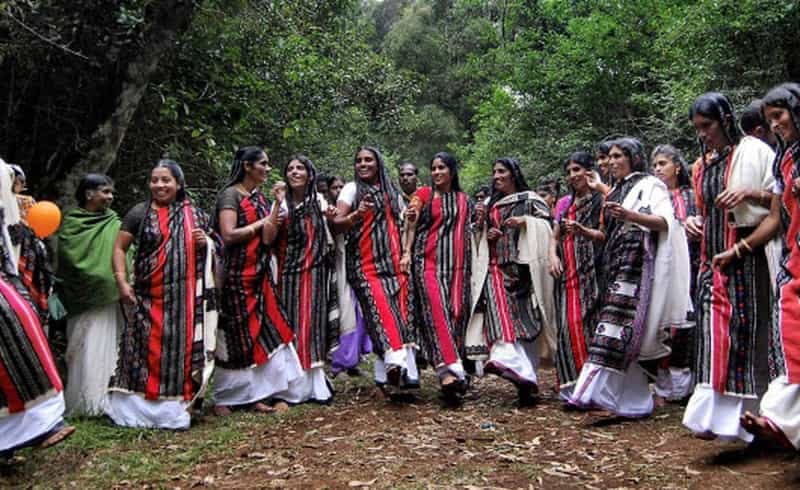People known as Kurumbas are found across a huge area of South India. They are found in the region of the Nilgiris and are situated at a distance between 11° 10′ and 11°30′ N and between 76°25′ and 77°00′ E, in the junction of the Western Ghat and the Eastern Ghat. The Kurumbas have thick dense forest, slopes, foot hills and the glens of the Nilgiri Plateau. There are seven Nilgiri groups: the Alu-(milk), Betta-(hill), Palu-(milk), Mulla-(net), Jenu-(honey), and Urali-(village) Kurumbas, along with the Mudugas (no etymology). All of them are different from one another right from their dialect to the religious beliefs and also the cultural attributes. During the period of 1971, Indian census holds around 12 930 Kurumbas. In all there are a small region of South India that has the groups of Kurumbas and they cover the plateau and amongst the poorest.

Out of the four tribes that occupy the Nilgiri Plateau, it is believed that the Kurumba, Toda, and the Kota are the tribes were brought together in all by the parent creator. The legends says that the there were in all three brothers who had showed disrespect towards their parents and used to always bring out some or the other clashes in between them. Their father was supernatural and because of this day to day quarrel, he assigned the various functions to them and had ordered them that they will exchange the services and the goods. The descendants from these 3 brothers have become their tribes and they are well known for the common fate of their life.
Traditionally, the Kurumbas are well known for their occupation which was gathering and hunting. They used to live in the steep plateaus of South India. They have practiced shift cultivation, trapping of the small animals and the birds. The settlements in the early period have usually been isolated with the Kurumbas those that are living in the rock or caves shelters, dwelling near or inside the forest, huts or in the house. They used to stay together in hamlets and used to spread in the garden. Mangoes, Bananas, jack Fruits, Maize and the Chilies are yielded from the Garden. Today, the scenario has totally changed. The ever increasing population of this region and the Kurumbas are forced to grow the plantation of the coffees and tea by working.
Since the ancient period, the Kurumbas had created a co – operative relationships along with the other tribes that helped them to exchange the services and the goods. Kurumbas used to supply the Tod Poles that are most important in the Toda Funeral Rites. There are 3 varieties of Baskets which Badagas and even provides the music for the Toda and Bagada Festival. Apart from this, the Kurumbas are very famous for the provision that makes it sorcery.
Since the ancient period, the Bagada communities appointed a specific Kurumbas to protect them in the form of a guardian and as a watchman for few constituent villages. This appointment is committed for the long life and is passed from one generation to other. Along with guarding, this watchman used to play an important role in harvesting and sowing seeds in a similar manner as adjunct priest known as kani-kurmi. There are many other roles played by the Kurumbas in some other form. In the form of diviner known as Kannigara, exorcist known as Dev Nagara and the sorcerer known as Odia or Odigara. The Kurumba perform their duty along with the herbs, roots and the spells. These things can bring sickness or the bereavement to the enemy. The therapist known as Maddugara have his role as a medicinal man or the curer. The therapists are so powerful that he can turn himself into a living animal. Looking at the deep knowledge they have, Kurumbas were afraid to go to them. However, there were many other tribes that banned the Kurumbas.
There were numerous massacres that belong to the Kurumbas and are reported around 1800s. The massacres used for the retribution for supposed performance of sorcery imposed on the individual or general communities. Now days the Kurumba watchman does not patrol in the village fields. The tribes belonging to the other communities now no longer fear the tribes of Kurumbas. The tradition that involves sorcery is still preserved but the fear that used to lie inside the mind of the tribes has totally left by neighbouring tribe’s people. The matter of fact is to think that whether the Kurumbas are still present on the Nilgiris or the ancestors who used to collect from more recent immigrants who were involve in farming.
Their languages are from the south Dravidian families. These groups are very well planned. The tribes here practice endogamy. The marriages between the cross cousins frequently occur in the community. Today, many of the young people are accepted both by Christianity and Hinduism to the conventional beliefs.